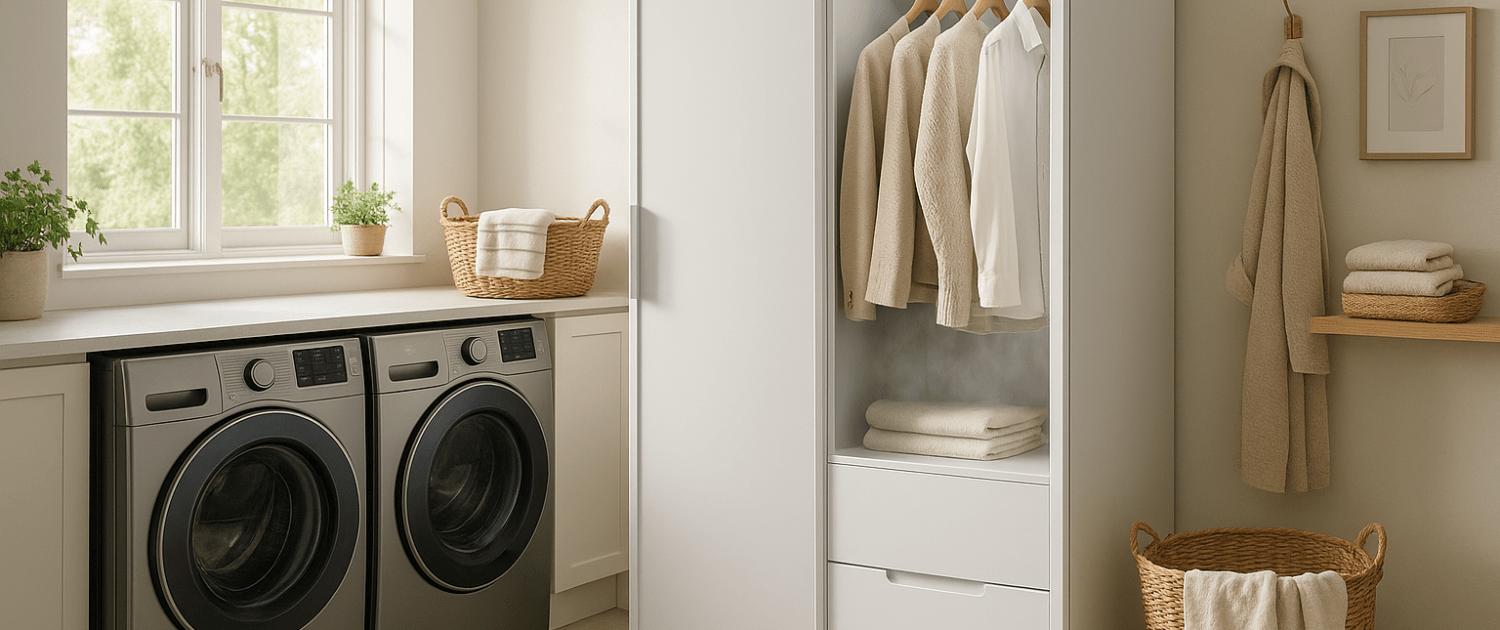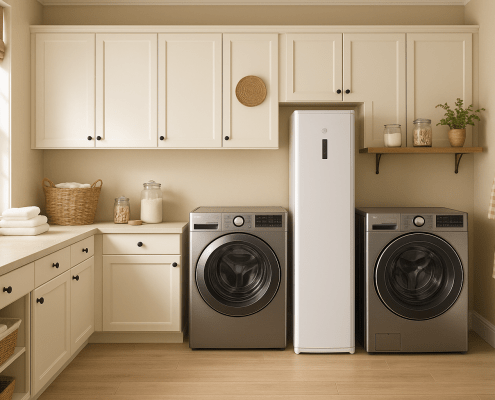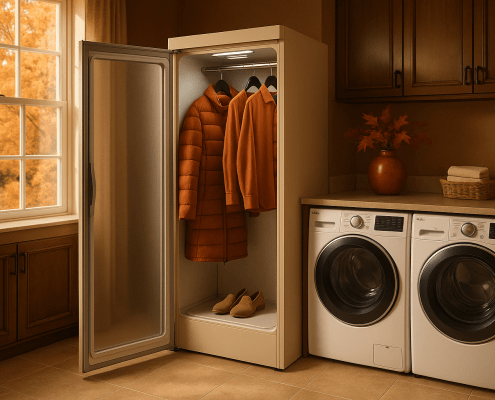Laundry Steam Closet Not Drying Properly? Try These Easy Fixes
Steven E / Monday July 7, 2025
A laundry steam closet is one of the most innovative appliances you can own. Not only does it refresh and sanitize clothing with steam, but it also dries garments gently so they’re ready to wear. But what if your steam closet isn’t drying properly? Clothes come out damp, unevenly dried, or even wetter than you expected; clearly, something’s not right.
The good news? Most drying problems are easy to diagnose and fix on your own. In this guide, you’ll learn exactly what can cause your laundry steam closet to underperform, how to test the key components, and the steps you can take to fix it.
The information in this article may not apply to your specific appliance model. We recommend consulting your manufacturer’s documentation or contact us with any questions.
Why Isn’t My Steam Closet Drying Correctly?
Steam closets use a combination of heat, air circulation, and sometimes dehumidification to dry garments after steaming. When any part of that system malfunctions, drying suffers.
Common Causes of Poor Drying:
- Blocked or dirty air vents
- A faulty or weak circulation fan
- Malfunctioning heating element
- Clogged condensation drain or tray
- Incorrect settings or an overloaded closet
- Worn door gasket allowing moisture to escape unevenly
We’ll go through these, step by step, to help you troubleshoot and repair your steam closet.
Step 1: Make Sure It’s Not a Settings or Load Issue
Sometimes the problem isn’t mechanical at all; it’s simply a matter of how the steam closet is being used.
Check:
- Load size – Steam closets are designed for a few garments at a time. Overloading can prevent proper airflow and leave clothes damp.
- Fabric type – Heavier fabrics like denim or wool take longer to dry than lightweight shirts.
- Cycle selection – Many models offer different cycles. Make sure you’ve selected one with a full drying phase rather than a steam-only refresh.
If everything seems correct, move on to mechanical checks.
Step 2: Clean the Air Vents
Airflow is critical to proper drying. If the intake or exhaust vents are clogged with lint, dust, or fabric fibers, moisture can’t escape and clothes stay damp.
What to Do:
- Unplug the unit.
- Open the door and locate the air intake and exhaust vents (usually on the sides, back, or bottom).
- Use a vacuum or soft brush to remove debris.
- Wipe down vent covers and surrounding surfaces with a damp microfiber cloth.
Proper airflow is one of the simplest and most important fixes for restoring drying performance.
Step 3: Test the Circulation Fan
The circulation fan helps move warm air and steam around the chamber and pushes moist air out. If it fails, the air becomes stagnant and the clothes won’t dry.
How to Check:
- Run a cycle and listen for the fan’s whirring sound.
- Hold a lightweight strip of tissue near the vents and see if it moves, indicating airflow.
- If the fan is silent, noisy, or weak, it may be dirty or defective.
How to Fix:
- Unplug the closet and remove the back panel to access the fan.
- Clean the blades and housing with a soft brush or vacuum.
- Spin the blades by hand; they should turn freely.
- If the motor is seized or weak, replace the fan with a compatible part.
Step 4: Inspect the Heating Element
Without sufficient heat, water won’t evaporate, and your clothes will stay damp. If you notice that the chamber feels cool or only slightly warm during a cycle, the heating element could be the culprit.
How to Test:
- Unplug the unit and access the heating element (usually at the bottom or rear of the closet).
- Disconnect the element’s wiring.
- Use a multimeter set to ohms to test for continuity.
- If there’s no continuity, the element is burned out and needs to be replaced.
How to Replace:
- Unscrew the faulty element and remove it.
- Install the new element, reconnect the wiring, and secure it with screws.
- Test the unit to ensure even heating has returned.
Step 5: Check the Condensation Drain or Tray
Steam closets remove moisture from the air by condensing it into water, which collects in a drain tray or is pumped out. If the drain is clogged, the chamber stays humid and prevents clothes from drying.
What to Do:
- Locate the condensation drain tray or outlet.
- Remove it and empty any standing water.
- Clean it with warm, soapy water and dry thoroughly.
- Check the drain hole for clogs and clear it with a pipe cleaner or small brush.
Once cleaned, reassemble and run a cycle to see if drying improves.
Step 6: Inspect the Door Gasket
A leaky door seal allows moist air to escape unevenly, making it harder for the system to maintain the right conditions for drying.
What to Look For:
- Cracks, tears, or flat spots on the gasket.
- Warping or gaps when the door is closed.
How to Fix:
- Clean the gasket with warm water and mild soap.
- If it’s damaged, peel it off and press a new gasket into place, ensuring a tight seal all the way around.
Step 7: Run a Full Test Cycle
After addressing the above issues, run a test cycle with a small load of lightweight clothing.
Watch For:
- Even heating throughout the chamber.
- Steady airflow from vents.
- Condensation is collecting properly in the drain.
- Clothes are coming out dry and warm.
If all looks good, you’ve successfully fixed your drying issue.
Where To Find Us
If you need any replacement parts for your appliances, you can enter your model number at AppliancePartsPros.com to locate and order them quickly. Most orders arrive in just two business days, and we have tons of great information in our repair help section and YouTube videos to help you troubleshoot.
Stay connected with the latest DIY tips, tutorial videos, and repair guides by following us on Facebook, Instagram, and Twitter. We love hearing about your repair stories and successes. If you need more help or want personalized guidance, feel free to reach out. We’re ready to help you take on your next project with confidence!
With nearly a decade of experience in providing top-notch customer service regarding appliance parts and repair, Steven enjoys sharing practical advice, troubleshooting tips, and interesting information to help readers stay informed.





